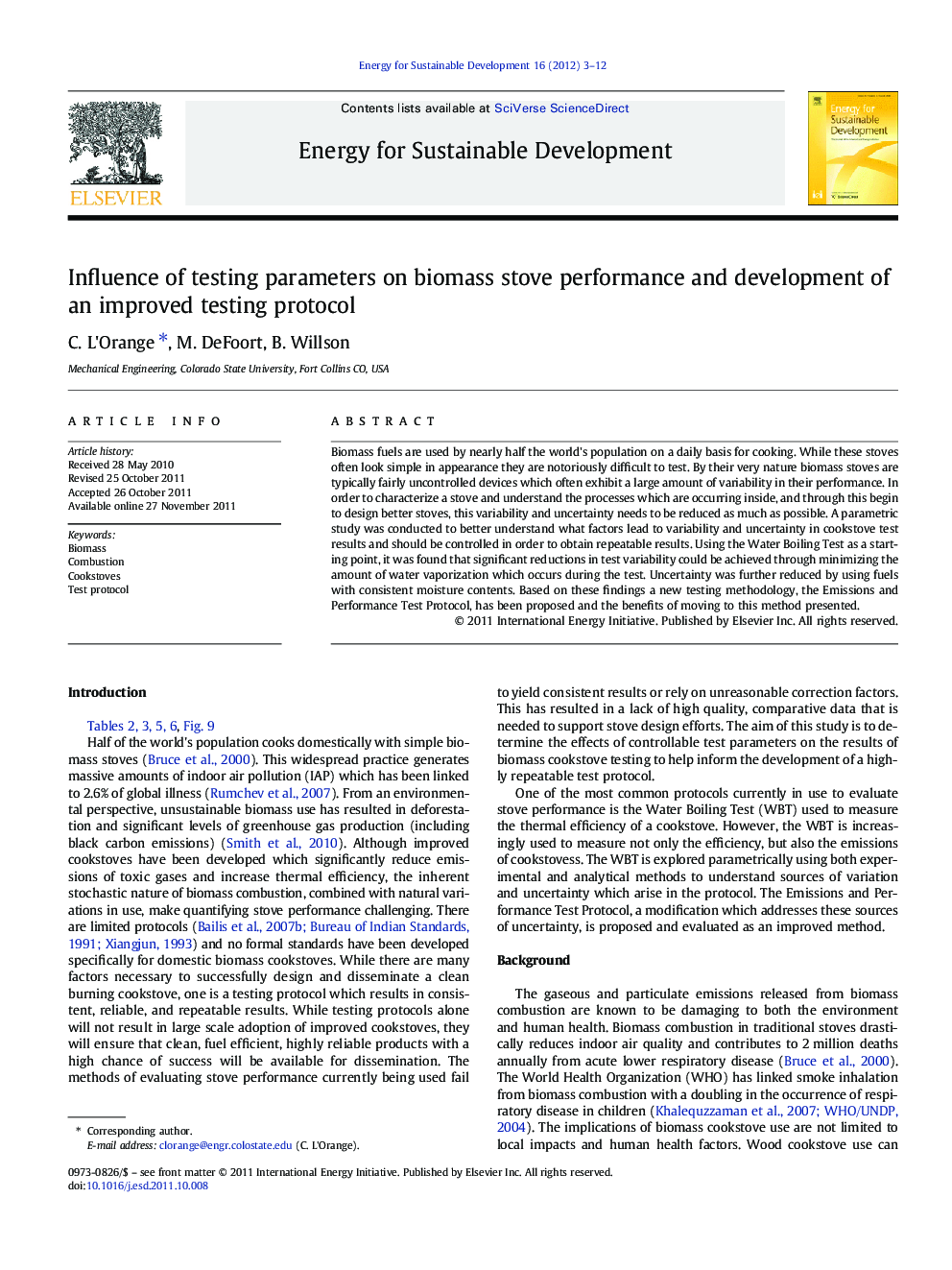| Article ID | Journal | Published Year | Pages | File Type |
|---|---|---|---|---|
| 1047258 | Energy for Sustainable Development | 2012 | 10 Pages |
Biomass fuels are used by nearly half the world's population on a daily basis for cooking. While these stoves often look simple in appearance they are notoriously difficult to test. By their very nature biomass stoves are typically fairly uncontrolled devices which often exhibit a large amount of variability in their performance. In order to characterize a stove and understand the processes which are occurring inside, and through this begin to design better stoves, this variability and uncertainty needs to be reduced as much as possible. A parametric study was conducted to better understand what factors lead to variability and uncertainty in cookstove test results and should be controlled in order to obtain repeatable results. Using the Water Boiling Test as a starting point, it was found that significant reductions in test variability could be achieved through minimizing the amount of water vaporization which occurs during the test. Uncertainty was further reduced by using fuels with consistent moisture contents. Based on these findings a new testing methodology, the Emissions and Performance Test Protocol, has been proposed and the benefits of moving to this method presented.
► Simple changes to the Water Boiling Test can lower the variability seen between tests. ► Fuel moisture content has a significant impact on biomass stove test results. ► Fuel geometry and pot geometry do not have a significant impact on test results.
